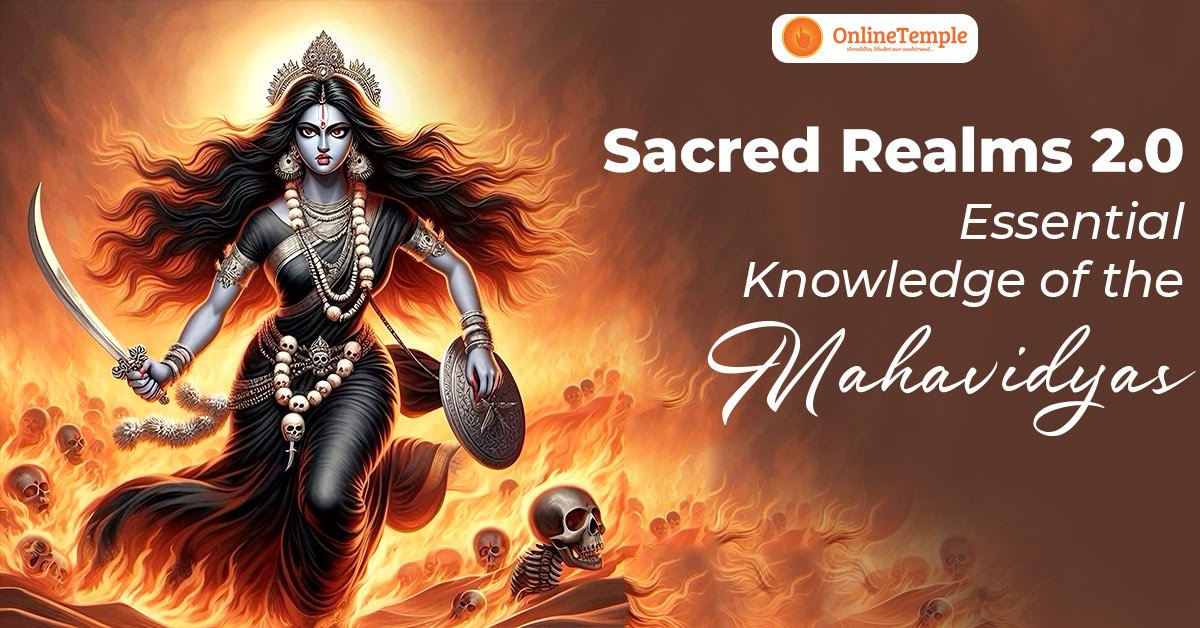Ten aspects or moods that the divine mother shares with her offspring are depicted in the Dasha Mahavidya. She could become a ruthless punisher like Maha Kali, a caring protector like Bagalamukhi, an enchantress like Tripurasundari, an effective controller like Bhuvaneshwari, an able king-maker like Siddhi Dhatri, an epitome of sacrifice like Tripura Bhairavi, a true friend like Tara, and a teacher like Matangi. In this blog, we will look at the next top 5 Greatest Mahavidyas You Should Know. At that point, you will realize how vast Sanatana Dharma is. You should now explore the online Hindu Puja Service to gain a new perspective on Hindu tradition and custom.
Mahavidya: Bhuvaneshwari
Bhuvaneshwari qualifies as the Goddess of the entire Universe (Bhuvan-Universe, Ishwari-Goddess), and sadhakas regard her as the owner of the Grahas, Solar Systems, Stars, and other celestial objects. As Lord Shiva’s consort, an expansion of Parvati Devi, the Controller of the Cosmos assigned her the task of maintaining the universe by exercising her female potency.
Mahavidya: Tripura Bhairavi
Tripura signifies the Three Worlds, and Bhairavi denotes a connection to Tantra. Goddess Tripura Bhairavi is the Goddess of the three Tantra Sadhanas. Although most people associate Tantra with Tamasic worship, there are Satvik and Rajasik forms as well, and Devi Tripura Bhairavi takes on the (Satvik, Rajasik, and Tamasic) form based on the Chanter’s will. For example, Chanters worship her to achieve Tantra or Black Magic siddhi, and she appears in her Ugra Swarupa. However, if devotees perform Tantra (spiritual practices such as puja, Aradhana, and Upasana of Devi) regularly in the Satvik mode of worship, she manifests as Saumya Swarupa. She is indeed the Goddess of Fulfilling Wishes. You can go to our website Onlinetemple.com and book an online Das Mahavidya puja and follow all the Hindu traditions and customs.
Mahavidya: Chinnamasta
Her name implies that the Goddess is headless, and people refer to her as the source of intoxication. She is also associated with sexuality, Tantra, and sacrifice, among other things. She represents destruction (without a head) and provides sustenance to others through her blood. She stands over a sexually aroused couple and, despite depictions to the contrary, fundamentally embodies self-control. This portrayal suggests that she transcends her baser sexual impulses. She bestows boons for sustenance and satisfies her associates’ hunger by spewing her blood, making the vengeful Goddess difficult to subdue. People do not publicly worship her in temples because her mode of worship is personal and gory. There exist many Buddhist interpretations of this deity, such as Chinnamunda.
Mahavidya: Dhoomavati
As her name implies, she represents Smoke Personified, so Tantriks associate her with extinguished fire, destruction, widows, crows, death, and other destructive symbols.
There is no connection between Lord Shiva and the widowed Goddess. She is the only form of Devi Parvati in which Lord Shiva is not present, and she represents the dark side of life, a life without a husband, a life without happiness, shrouded in endless smoke.
Her symbolic representation serves as an exemplification of the life of a bereaved widow perched on a crow. Crows are often associated with death. A widow represents all bad luck, misfortune, grief, and loneliness since, even when she is alive, she leads a life similar to that of a deceased person. Tamasic mode of worship remains the only mode of worship of Dhoomavati.
Meat, flesh, hair, liquor, and other unlucky objects are worshipped by tantriks. People find her siddhi to be very strong, so if something goes wrong during the sadhana process, Sadhaka’s family may also suffer fatalities.
Mahavidya: Bagalamukhi
She depicts a goddess associated with Pitambari, Yellow, and Golden Hue. People call her the golden goddess because she wears a golden garment that covers her golden body. She adorns herself with gold ornaments, and her hands hold a heavy golden club. Her form represents how she defends her devotees and eliminates any opposing forces, which causes doubts to disappear when she is satisfied and made happy by the devotees’ appropriate invocation. Empress of knowledge, she soars on a Bagula Bird (Heron). You can go to our website Onlinetemple.com and buy online puja kit and follow all the Hindu traditions and customs.
Read the part one here: Sacred Realms 1.0: Essential Knowledge of the Mahavidyas

